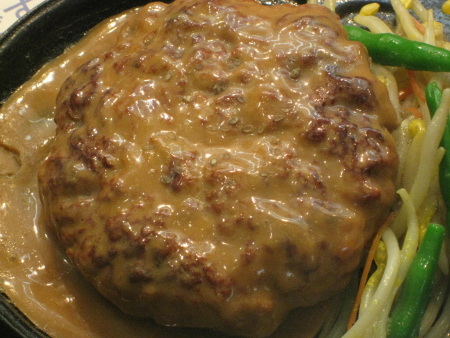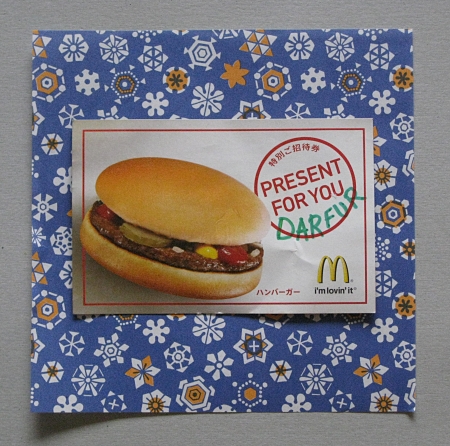LHC
Tuesday, September 9th, 2008
randformblog on math, physics, art, and design |

Due to a recent conference in the north of Japan I passed the airport of Aomori. It looked to me very much like 60/70/80-ties east german architecture.

Hiroshima and Nagasaki, the two cities which suffered under a US nuclear attack are in the vicinity of Fukuoka (where the writers of this blog are currently located), so there are quite some people around here for whom these attacks are not just a scary story but bitter reality.
The bombs were a production of the Manhattan Project which was initiated by the fear that Nazi Germany could develop bombs of its own (which turned out wasn’t the case) and there were plans to throw nuclear bombs on Ludwigshafen, Mannheim and Berlin. Luckily Berlin capitulated early enough! If this wouldnt have been the case you probably wouldnt read this blog, as both of my parents were in Berlin in wartimes (with a few exceptions: my father and his mother (a single mom) were evacuated to Bavaria for a short time and my mother and her mother went on a trip to get the mother of my grandmother (whose husband died already in the first world war) out of Poland)
Among the targets of the US bombs were the Mitsubishi Steel and Arms Works and it is a strange coincidence that right this company is currently developing Japans new fast breeder at Monju (partially in collaboration with russia). At this point one should repeat that fast breeders bear a high proliferation risk.
The old fast breeder in Monju was closed in 1995 following a serious sodium leak (which was luckily not radioactive like this leak) and fire. It is expected to reopen in 2008.

In a link in this randform post about food among others the issue of obesity versus hunger was mentioned.
I am not so sure wether this comparision was really helpful in this context. As a matter of fact in western countries it is often the poor who have obesity problems. First a diet which is high on carbonhydrates, fat and sugar is often simply cheaper than a high quality fresh (organic) vegetable/low fat diet. Secondly even if you could replace a bad fat meal with simple and low cost but good ingrediences, this often requires a certain degree of diet education and awareness. In particular everybody who finally managed successfully to get rid of the extra load due to excessive heavy calories should be dearned cautious to put on new ones. But this is usually a long and not so easy learning process.

And as it seems for example in the US it is rather that people are lured into an unhealthy food consumption. It is especially the children, which are defenselessly exposed to subtle marketing methods.
According to a study Food and beverage companies spent $1.62 billion to market their products to children in 2006. The FTC study was requested by Congress in response to growing concern about childhood obesity in the United States. The study, did not look directly at the possible link between food and beverage advertising to kids and childhood obesity, but to assume that such a link exists is definitely not too far fetched, a more detailled distinction between advertisements for healthy nutrition versus fast food/soft drinks etc. will give more information.
Over here in Japan the advertisement of food in restaurants is especially interesting to observe. Restaurant/food stands meals are usually modelled in plastic, which looks like Fimo (please see images). This food modeling seems to be a kind of art form, may be similar to food fotography (which uses also often plastic). For me the meals look rather like some futuristc nano food, however given the sucess of this kind of advertisement it is obvious that people feel attracted to this plastic food simulation. Interesting question, why? Because this kind of food cant rott and smell badly?. Because colors and shininess are exagerated and thus better perceptible as a kind of 3D symbol?
after “read the rest of this entry” you can find an artwork by Franziska Assisi (Bosnia) called: “Fimo naschen mit nichtlichtartigem Beschleuni-GEAR”

I currently have to refrain a bit from blogging as I am currently a bit busy with all sorts of stuff, like I just finished my class, I have to prepare for a geometry conference and to care about other general organisatorial stuff like such “nuisances” as that the electricity of our appartment was suddenly switched off. As everybody nows such “nuisances” can keep one pretty busy.
An anonymous reader was asking in a comment what the magazine “Siegessaeule” is. Since I wrote a bit more in the answer I decided to make it into a blog post.


An update to my comment to this randform post. In their latest publication the french authority for nuclear safety ASN is declaring that concerning the accident at the Tricastin nuclear power centre:
Les dernières mesures réalisées dans l’environnement semblent indiquer un retour à la normale pour la quasi-totalité des points surveillés dans les eaux superficielles et les eaux de nappe. Deux points de mesure des eaux de nappe qui ont montré ou qui montrent des valeurs plus élevées que la valeur guide préconisée par l’OMS pour les eaux destinées à la consommation humaine retiennent l’attention des experts.
So “retour à la normale” sounds as if everything is OK again – after the leakage. Unfortunately this is not the case. Besides some doubts about the official versions (for example an independent investigation of the organisation CRIIRAD found atoms with a mass of 236 which is probably Uran 236 and thus contradicting the statement that only natural uranium had been spilled (info via Schockwellenreiter)) one should note that the latency time for cancer due to incorporated radioactivity (the radiotoxicity of uranium as well as plutonium is is mainly due to alpha radiation and such it is mainly dangerous if incorporated) for bone, liver and kidney cancer approximately 20-30 years for Leukemia it is about 2-10 years. So higher cancer rates will probably be visible only after that times (if they are monitored at all?)
Still it seems that things could have been much much worse. I dont know what exactly is processed at Tricastin, but the fact that France’s fast breeder the Phenix is much closer to the Tricastin site than to the site of the reprocessing plant at La Hague and the fact that it seems that it was already discussed to built an EPR at Tricastin, which as I explained here and here may burn MOX fuels (and thus also Plutonium) could mean that people were lucky that it was “just (unenriched) uranium” and not plutonium, which was spilled. Why? Because plutonium 239 has a specific activity which is about 180.000 times bigger than uranium, as can be seen in this table by the University of Oldenburg. Roughly means: If you incorporate the same amount of uranium 238 or plutonium 239 then plutonium is about 180.000 times more dangerous.

The above scientific visualization (which displays the wave pattern of a little droplet dropped into mercury in one focus of the ellipse) can be found in a book by Wilhelm Weber and his brothers Ernst Heinrich Weber. It can be found in principle on p.582 in the html version or on p. 619 of the pdf version at a google books scan of the book: “Wellenlehre auf Experimente gegründet, oder, über die Wellen tropfbarer Flüssigkeiten mit Anwendungen auf die Schall und Lichtwellen” (The theory of waves based on experiments or about waves of drippable liquids with applications to sound and lightwaves). The book is from 1825. Unfortunately the google scan has not such a nice quality as e.g. a scan of galileos works mentioned in this randform post. In particular in the google scan one can’t read that the drawing was made by:

Is Fr. Ed. Mueller the secret pioneer of Op Art?